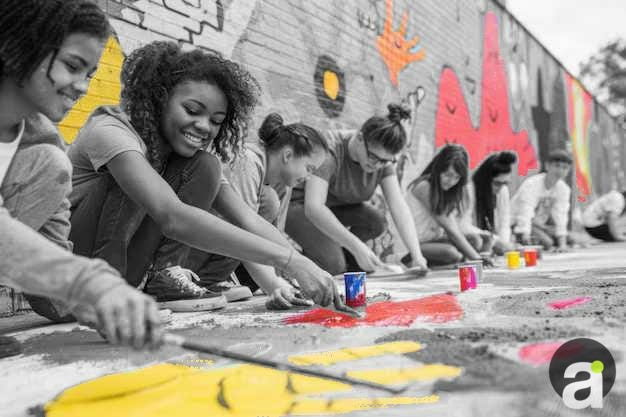Community as Classroom: How to Build Meaningful Partnerships for Transformative Arts Learning
Arts education doesn’t—and shouldn’t—happen in isolation. When schools, cultural institutions, local businesses, and artists collaborate, they create richer, more relevant learning experiences.
Community as Classroom: How to Build Meaningful Partnerships for Transformative Arts Learning
This article provides you with:
The importance of community partnerships in arts education
Key steps to identify and engage the right community partners
Strategies for fostering long-term, mutually beneficial collaborations
Real-world examples of successful arts-community partnerships
Practical tips for integrating community resources into arts curricula
Ways to measure and communicate the impact of these partnerships
Introduction: Why Community Partnerships Matter in Arts Education
Arts education doesn’t—and shouldn’t—happen in isolation. When schools, cultural institutions, local businesses, and artists collaborate, they create richer, more relevant learning experiences for students. A "community as classroom" approach breaks down the walls between institutions and neighborhoods, turning the entire community into a living, breathing extension of the learning environment.
For art educators and arts managers, building these partnerships can mean the difference between a standard curriculum and one that truly engages students, fosters creativity, and prepares them for real-world artistic careers. But how do you create these connections in a meaningful, sustainable way?
This article explores the best practices for forging strong community partnerships that enhance arts learning while benefiting all stakeholders involved.
Sponsored by Art8 “Webinars for Creatives”
1. Identifying the Right Community Partners
Not every organization or individual will be the right fit for your arts program. The key is to find partners whose missions align with your educational goals. Consider:
A. Local Arts & Cultural Organizations
Museums, galleries, theaters, and music venues often have education outreach programs.
Example: A high school painting class partners with a local gallery to exhibit student work, giving learners real-world exhibition experience.
B. Professional Artists & Creatives
Inviting working artists to lead workshops or mentor students bridges the gap between education and profession.
Example: A ceramicist collaborates with a middle school to teach pottery techniques while discussing career pathways.
C. Community Centers & Nonprofits
Organizations focused on youth development or social impact may offer funding, space, or programming support.
Example: A nonprofit sponsors a mural project where students design and paint a public space.
D. Local Businesses & Municipal Programs
Businesses may sponsor arts initiatives or provide real-world project opportunities.
Example: A café commissions student artwork for its walls, offering exposure and potential sales.
2. Building Mutually Beneficial Partnerships
A successful partnership isn’t one-sided—it should provide value to both your program and the community partner.
A. Define Clear Goals & Expectations
What does each party hope to gain? (e.g., student engagement, community visibility, skill development)
Establish roles, timelines, and deliverables upfront.
B. Foster Two-Way Learning
Encourage partners to contribute ideas, not just resources.
Example: A theater company teaches acting techniques while students provide fresh perspectives on storytelling.
C. Ensure Sustainability
Avoid one-off projects; aim for ongoing collaborations.
Secure funding through grants, sponsorships, or shared budgets.
3. Integrating Community Resources into Arts Learning
Once partnerships are established, the next step is weaving them into your curriculum effectively.
A. Project-Based Learning (PBL)
Design assignments that require collaboration with community partners.
Example: Students create public art installations addressing local social issues.
B. Field Trips & Site Visits
Move learning beyond the classroom with visits to studios, theaters, or cultural events.
C. Mentorship & Apprenticeships
Partner with professionals to offer hands-on training.
Example: A graphic design firm mentors students in branding projects.
4. Measuring & Communicating Impact
To sustain partnerships, you must demonstrate their value.
A. Track Student Outcomes
Assess skill development, engagement levels, and career readiness.
B. Gather Feedback from Partners
What worked? What could improve?
C. Share Success Stories
Use newsletters, social media, and events to showcase collaborations.
The Future of Arts Education Lies in Community
When arts programs embrace the "community as classroom" model, they create deeper, more impactful learning experiences. By strategically identifying partners, fostering mutual benefits, and integrating real-world opportunities into curricula, educators and arts managers can cultivate programs that not only teach skills but also strengthen communities.
Now is the time to reach out, collaborate, and reimagine what arts education can be.
Art Institute Spotlight: MASSART
Recent MassArt Graduate Named Finalist for AXA Art Prize
MassArt alumna Lara Garay, BFA ’25 (Illustration), has been selected as a finalist for the prestigious AXA Art Prize.
MassArt alumna Lara Garay, BFA ’25 (Illustration), has been selected as a finalist for the prestigious AXA Art Prize. One of the leading student art competitions in the United States, this competition is open to any style of figurative paintings, drawings, and original printmaking created by undergraduate and graduate art students.
From over 600 submissions reviewed by our panel of Regional Jurors from educational institutions across the US, 40 students artists were chosen as exhibition finalists from curators Alex Gartenfeld of ICA Miami, independent curator, Claudia Gould, Jonathan Rider from the FLAG Art Foundation, and independent curator, John Yau. The exhibition will go on view in November at the New York Academy of Art.
Discover the World’s Top Art Institutes at https://artinstitutes.org






